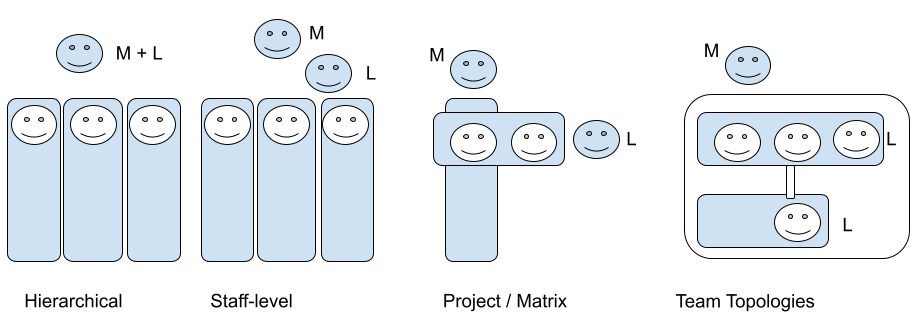Leadership as an Individual Contributor
Individual contributors can convey leadership both in roles and activities without being in the formal organizational management hierarchy. The practical organization for this can take many forms.

This post is about highlighting the leadership activities for all the people who are not part of the organizational hierarchy. They are (we are, I am) the individual contributors (IC) and we can convey leadership both in roles and activities without being in the formal organizational (management) hierarchy.
I usually take the Jerry Weinberg quote “You don’t have to be a boss to be a leader” seriously. And that goes for both IC and (line) managers. Being bossy helps no one, but also leadership is not only for the bosses. The Testing Peers mention in their 77th episode three forms of leadership: hierarchy, leading activities and thought leadership.
Testing Peers 77 on Spotify
For learning about being a test hierarchy lead specifically, check out Building Up Quality Leaders by Laveena Ramchandani on Test Automation University. Most of this post, though, has general applicability for all IT leaders and is not specific to leading testing activities.
When I think of being a leader of something work-related (usually an IT delivery of some sort), my current thoughts focus on these topics:
- Drive an activity and ensure that something happens
- Empowering others and stepping away from the actual work.
- Promoting knowledge-sharing of a certain skill across the organization
Anyone who takes the initiative to both drive something and step out of the action is a leader to me. Some years ago I compared being an IC leader and leadership in the context of volunteer organizations. What still holds as the anchor for the IC leader is that there is no direct formal power over the team doing the activities. While you can pull rank through a formal leader, it rarely helps anyone.
Sometimes IC leadership is all about glue work - being the one who makes everything stick together and work coherently. Testing and quality engineering people are often already doing glue work as covered here:

Buzzsprout: Quality Bits S2:E17 Team Glue & Why QA is a Tech Leadership Role with Vernon Richards
Being aware of formal and informal leadership positions is one way to understand what playing field IC leaders have. Organizations work in many ways and the practical organization for this can take many forms.
A Little Organizational Theory
I can think of at least four ways to organize leaders and managers in an organization:

- Hierarchical: The formal hierarchical manager of a unit is also the informal leader.
- Staff-level: The manager of the unit is not the same as the leader. The leader is a staff-level individual, who has the informal leadership role. (Read up on the work by Will Larson and Tanya Reilly regarding Staff-level roles).
- Project/Matrix: The organizational hierarchy is one dimension, and the delivery organization is another - with the Leader being in charge of the deliveries. This is often seen in consultancies or similar project-focussed organizations
- Team Topologies: This is an approach to organizing IT delivery organizations for fast flow. While a formal manager M exists, they can span multiple types of units with each their focus. One unit might be delivery/stream-aligned and another unit enabling/coaching-focused. Each of these units can have their own leader but the purpose of them is different. One being release-focused the other with capability focus.
All my 20+ years in being a Test Leader I have been the manager of no one. I have been in all the first three organization types above, and am currently promoting the latter. I see many ICs leading testing in the context of specific delivery and often combined with being the release manager. But if we focus only on delivery we will surely miss building and empowering the capability (of being a test lead or release lead). With that view, we need also to address empowering others and building knowledge sharing - more about that in future posts.



